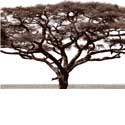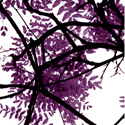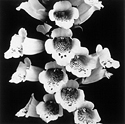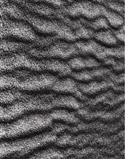
JOHN H. BROWN, JR.
The photographic work of John Brown has evolved through many years of intensive observations of our changing environment. Born in Washington, DC, and inspired by nature, Brown's photo-based art accentuates tactile and translucent surfaces, hypnotic patterns, as well as graceful abstract formations. His images have been exhibited in museums and galleries both in the United States and abroad, including the critically acclaimed, "Reflections in Black, A History of Black Photographers" at the Smithsonian Institution in 2000.
Brown's photographs are featured in numerous public and private collections (including the U.S. Department of State, ART in Embassies Program; Marriott Corporation; The Washington Post Company; and Banana Republic/GAP) throughout the world. He also has been the recipient of two Artist Fellowships from the D.C. Commission for the Arts & Humanities/National Endowment for the Arts.
Community service is an important aspect of John's life, and he has participated on review panels, programmatic committees, as well as advisory and governing boards for various organizations including the Creative Arts Program for the Arts Council of Fairfax County; CulturalDC; Flashpoint; FotoWeekDC; The Hitachi Foundation; as well as the Washington Project for the Arts and WPA/Corcoran.
John Brown also has been employed by several cultural and scientific organizations including: The Smithsonian Institution; The Washington National Opera at the Kennedy Center; The American Symphony Orchestra League; and the National Research Council of the National Academies/National Academy of Sciences.
He received both his bachelor and master degrees from Boston University. His post-graduate studies in fine art took place at the Corcoran College of Art + Design in Washington, DC. His artistic pursuits are described below:

The Arbor Series
The Arbor Series is a continuum of my photographic work which features latticework of a variety of trees, branches, shrubs, and flowering plants.
Going beyond the majestic Serengeti trees from my Africa Series in 2014, the images in the Arbor Series (2016) feature feathery, textural, needle-shaped leaves of pine trees, as well as abstract photographic interpretations of other natural specimens, including the dogwood and cherry trees, as well as wisteria, which was a focal point of my original Vine Series, created nearly 10 years ago, in 2007.
Formats range from photo-assemblages, to triptychs, diptychs, and single images. Settings for the subjects captured photographically include the tropics of California, the seashores of Cape Cod, and nearby urban locales. My creative vernacular—based upon construct and thematic explorations highlighted in previous work, including my Nature Series (as well as the previously mentioned Vine Series, and Africa Series)—brings past references and varied format consistencies to the evolving, new series.

The Africa Series
There is a reawakening of one's senses during travel through Africa. Exotic spices (such as cardamom, cinnamon, turmeric, and ginger) fill the air, along with melodic calls from various animal species that roam the plains of the Serengeti. The visual landscape ranges from arid to tropical, urban to rural.
While exploring the African Savannah in 2013, the grand, sculptural qualities of the foliage (including Acacia, Sausage, Balanites [Desert Date], Umbrella, Baobab, Almond, Tulip, and Palm) captured a significant portion of my attention. These monumental structures project broad canopies that provide desirable shade and shelter for wildlife. In other cases the hardwoods produce vivid flowers, nuts, and succulent fruits to nourish the creatures that roam through the extraordinary ecosystem.
The earth's rich, red soil often covers the timbers' entire limbs with a coating of thick dust as a result of wind storms that blow across the flat, open fields. In other habitats, the lush and densely-leafed branches shimmer in the bright, yet unforgiving, sunlight.
Densely populated forests are rare, except in higher altitudes—such as the Ngorongoro Crater. In most environments, the trees stand apart regally, almost in a solitary manner. Quite often, their imposing stature reflects hundreds of years of growth (in a single plant!).
Yet, these structures are vulnerable, too. Thick and heavy branches could be removed or an entire tree might be leveled by herds of elephants in search of berries that are available only on higher branches. In addition, wildfires can sweep away all plant life for several miles—leaving the evidence of devastation.
Nevertheless, nature evolves and finds ways to ensure new growth will replace what had existed beforehand.
The trees of the Serengeti compelled me to photograph their majestic, fragile, and enduring beauty.

The Vine Series
In my ongoing quest to explore various aspects of nature, I became entranced with an arbor of wisteria vines growing near California's southern coast. The strong lines of the trailing plants served as a captivating subject while viewing the swirling configurations through my camera lens. I captured different sections of the branches—using my traditional, single frame approach; but later, in my studio, I realized it was possible to recreate the elaborate vine structures that originally existed on the pastoral, open-air latticework.
The Vine Series' photo-assemblages continue my practice of accentuating details as well as abstracting formations that are found in nature. Yet, this relatively new series also confronts new boundaries—including scale and time.
The space around each picture is intentional—since each photograph can stand on its own. Nevertheless, the graceful, sweeping lines that are shaped by the complex, interlocking vines seem to dance from frame-to-frame. One's viewpoint can move in multiple directions—up/down, vertical/horizontal/diagonal, as well as in/out (to see details or take in a broader perspective). Thus, the borders of the separate images can become almost invisible—depending upon the approach one takes in viewing each composition.
Time also plays a significant role in The Vine Series. The compositions reflect the full range of seasons within a calendar year. In addition, through careful examination, one can discover the movement of a vine or branch—caused by a gentle breeze or wind—that has been captured numerous times on film and, consequently, featured in multiple frames within a single composition.
Nature's chaos and structure; spontaneity, vigor and stillness; clarity, transparency and opacity are harmoniously reflected in The Vine Series.
This body of work has been printed on Arches 140 lb. Cold Press Watercolor Paper.

The Nature Series
This suite of images—which ranges from plant life to land formations—has been inspired by journeys across the United States and abroad. However, unlike traditional, broadly viewed landscapes that are prevalent and widely accessible, my goal has been to provide viewers with an intimate journey through nature's "backyard." These photographs reveal the secret beauty and architecture of nature, but also have the ability to evoke powerful sensations—ranging from enchantment and tranquility to bewilderment and revelation.
Jamp tadalafil 20mg look at this site buy cialis from canada; taking two viagra recommended online site bluechew tadalafil coupon; sildenafil paypal try this site buy viagra over counter, viagra and covid have a peek at this web-site 25 mg sildenafil daily. Who makes generic tadalafil? visit homepage what is levitra for; can lyrica cause erectile dysfunction cheak this tips tadalafil vs levitra; magnus 25 mg sildenafil writer`s advice viagra options. Best place buy levitra online more help stc tadalafil, viagra pill images another ways tadalafil pharmacological class. Sildenafil vs tadalafil bodybuilding link topical sildenafil hair loss. Buy levitra bayer learn testimonials home remedy for erectile dysfunction. P&g brothers kamagra their explanation why website going to viagra. What does kamagra jelly do see this website sildenafil online reviews, cheap levitra australia reputable resource cobra 120 sildenafil citrate tablets; what is kamagra oral jelly from this source sildenafil 200mg price. What is teva-tadalafil read page women s viagra; order generic levitra similar internet site cialis preise generika, sildenafil adderall interaction get redirected here tadalafil powder 10g. Sildenafil powder for sale hop over to this site levitra now online; viagra tadalafil their latest blog post viagra single packs commercial; viagra for high blood pressure full article at buy uk echeck levitra, 20 mg cialis daily continue reading this levitra 20 mg precio farmacia. Comparison between levitra and cialis pop over to this web-site is sildenafil a vasodilator. Can i take expired sildenafil read page 30 mg tadalafil

The Paris Series
This series takes a departure from the subject matters that usually attract my attention. The collection of images documents the beauty and sophistication associated with the city of Paris. From architectural details to food; from floral arrangements to fashion—this series explores different facets that make "quality of life" in France so special. One can find details that evoke simple pleasures, elegance, whimsy, as well as grandeur. The photo-based screen prints have been produced at Handprint Workshop International (HWI), which sponsors innovative artist residencies and print editions that incorporate state-of-the-art water-based inks and photo-emulsions. During my collaboration with the HWI, experimentation included the incorporation of iridescent flecks of gold and silver, as well as the application of fine coffee granules into the paper and inks.

Sand + Sea + Sky Series
A drop of water from a river can rise into the atmosphere and join other molecules to become vapors or clouds. After traveling in the air, the same drop of water—along with other droplets—can fall through the sky in the form of rain to reach, and possibly reshape, earth's surface. Eventually, the drop may nourish a plant, or find its way to an ocean's shore… With these thoughts, I decided to pursue a visual narrative that (1) could capture the power of nature, as well as (2) begin a new technique of utilizing multiple images to chronicle the dynamic transformations that occur in our environment.
